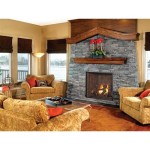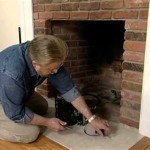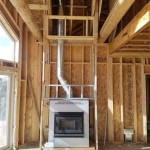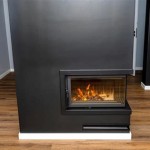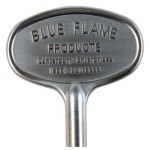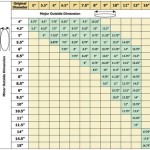Fire Resistant Rugs For Fireplaces: Protecting Your Home with Style
Fireplaces offer warmth and ambiance, but they also present a potential fire hazard. Embers, sparks, and even direct heat can damage flooring and ignite combustible materials. A crucial element in fireplace safety is the use of a fire-resistant rug. These rugs are designed to protect your floors from the risks associated with open flames and stray embers, while simultaneously enhancing the aesthetic appeal of your living space. Selecting the right fire-resistant rug requires understanding the materials, construction, and safety standards involved.
Traditional rugs, often made from synthetic materials like polypropylene or natural fibers such as cotton and wool without specific fire retardant treatments, can readily ignite and spread flames. A fire-resistant rug, however, incorporates materials and construction techniques that significantly reduce the risk of ignition and flame propagation. These rugs act as a barrier, preventing small embers from reaching the flooring beneath, thus minimizing the potential for a larger fire.
The importance of a fire-resistant rug extends beyond simple floor protection. It offers peace of mind, knowing that a crucial safety measure is in place. It also potentially reduces insurance costs as it can be considered a safety upgrade within a home. Furthermore, a well-chosen rug can complement the fireplace and surrounding décor, creating a cohesive and visually appealing focal point in the room.
Understanding Fire-Resistant Materials
The effectiveness of a fire-resistant rug hinges on the materials used in its construction. Certain materials possess inherent fire-resistant properties, while others are treated to enhance their resistance to flames. It is important to differentiate between “fire-resistant” and “fireproof.” No material is truly fireproof, meaning impervious to all heat and flame. "Fire-resistant" indicates the material is less likely to ignite or spread flames quickly compared to untreated materials.
Wool: Wool is a naturally fire-resistant material due to its high moisture content and protein structure. It chars rather than ignites easily, and it is self-extinguishing, meaning it will stop burning once the flame source is removed. Wool rugs may still smolder, but they are less likely to erupt into a large fire. Higher quality wool tends to be more naturally fire-resistant because it's often denser and contains more natural oils.
Treated Synthetic Fibers: Some synthetic fibers, such as inherently fire-resistant acrylics or those treated with flame retardants, can offer good fire protection. These treatments typically involve applying chemicals that impede the combustion process. The longevity of these treatments can vary, and it's important to inquire about the specific treatment and its expected lifespan. Regular cleaning and maintenance might affect the treatment's effectiveness.
Fiberglass: While not conventionally used for the rug pile itself, fiberglass is often used in the backing of fire-resistant rugs. Fiberglass is completely non-combustible and provides a critical layer of protection against embers falling through the rug. It's durable and dimensionally stable, making it an excellent choice for high-heat applications.
Modacrylic: This is a modified acrylic fiber that contains acrylonitrile. Modacrylic fibers are inherently flame resistant, meaning the flame resistance is built into the fiber's chemical structure and won't wash away or wear off. They are often used in rugs intended for high-risk environments.
When selecting a fire-resistant rug, it's essential to consider the material composition and any treatments applied. Look for certifications or testing data that verify the rug's fire resistance performance.
Construction and Design Considerations
Beyond the material itself, the construction of the rug also plays a role in its fire resistance. A tightly woven rug with a dense pile will generally offer better protection than a loosely woven rug with a sparse pile. This is because a denser construction minimizes the amount of oxygen available to fuel a potential fire.
Weave Density: The tighter the weave, the fewer gaps there are for embers to fall through and ignite the flooring beneath. Hand-knotted rugs tend to be denser and more durable than machine-made rugs, but also more expensive. Machine-made rugs can still offer excellent fire protection if they have a high knot count and a dense pile.
Pile Height: While a thick, plush pile can be comfortable underfoot, it can also be more flammable. A lower pile height is generally preferable for fire-resistant rugs, as it reduces the surface area available for ignition and reduces the amount of fuel available to a fire. A low, dense pile is the ideal combination.
Backing Material: As previously mentioned, the backing material is crucial for preventing embers from reaching the floor. Fiberglass is a common and effective choice, but other fire-resistant materials can also be used. Ensure the backing is securely attached to the rug pile to prevent it from separating and exposing the flooring.
From a design perspective, consider the overall aesthetics of your fireplace and surrounding room. Fire-resistant rugs are available in a wide range of colors, patterns, and styles to complement any décor. Choose a rug that not only provides fire protection but also enhances the visual appeal of your space. Consider the proximity of the rug to the fireplace opening. A larger rug extending further from the fireplace offers greater protection from stray embers.
When choosing a design, darker colors generally show less soot and ash. Patterns can also help to disguise dirt and spills. However, it is important to prioritize fire resistance over purely aesthetic considerations. Always ensure the rug meets the necessary safety standards, regardless of its appearance.
Safety Standards and Maintenance
To ensure the fire-resistant rug you choose provides adequate protection, it's imperative to look for rugs that meet established safety standards. These standards are developed by organizations that test and certify products for fire resistance. Understanding these standards can help you make an informed decision.
ASTM Standards: The American Society for Testing and Materials (ASTM) develops various standards related to fire resistance. Look for rugs that have been tested and certified according to ASTM standards such as ASTM D2859 (Standard Test Method for Ignition Characteristics of Finished Textile Floor Covering Materials) or ASTM E648 (Standard Test Method for Critical Radiant Flux of Floor Covering Systems Using a Radiant Heat Energy Source).
NFPA Standards: The National Fire Protection Association (NFPA) develops codes and standards related to fire safety. While NFPA doesn't directly certify rugs, their standards are often referenced in building codes and regulations. Understanding NFPA standards can provide valuable context when evaluating a rug's fire resistance claims.
California Proposition 65: This California law requires businesses to provide warnings about significant exposures to chemicals that cause cancer, birth defects, or other reproductive harm. While not directly related to fire resistance, it's important to be aware of Proposition 65 warnings when purchasing any product, including fire-resistant rugs.
Proper maintenance is essential for preserving the fire-resistant properties of your rug. Regular vacuuming removes dust, dirt, and debris that can act as fuel for a fire. Promptly clean up any spills or stains to prevent them from becoming embedded in the fibers.
Avoid using harsh chemicals or abrasive cleaners, as these can damage the rug's fibers or degrade any flame-retardant treatments. Follow the manufacturer's instructions for cleaning and maintenance. Periodically inspect the rug for signs of wear and tear, such as fraying edges or loose fibers. Repair any damage promptly to prevent it from compromising the rug's fire resistance. Replace the rug if it becomes significantly damaged or worn.
Furthermore, it's crucial to practice general fireplace safety. Always use a fireplace screen to contain sparks and embers. Never leave a fire unattended. Ensure the chimney is regularly cleaned and inspected by a professional. Install smoke detectors and carbon monoxide detectors in your home and test them regularly. By combining a fire-resistant rug with these other safety measures, you can significantly reduce the risk of a fireplace-related fire and enjoy the warmth and ambiance of your fireplace with peace of mind.

Guide To Fireplace Rugs Direct Fireplaces

Eastly Scroll Fire Resistant Hearth Rug

Encouraging Fireproof Rugs For Wood Stoves Inspirational Or Rug Surprising Fi Hearth Outdoor Decor Abu Dhabi

Spark Proof Fireplace Carpet Rugs Rectangle Mats Friendly Fires

Plow Hearth Dalton 2x3 6 Fireproof Rug Ash Wool Blend Fireplace Mat Protect Home Décor Hardwood Floor And Carpet From Sparks Embers Wood Sto

Fire Resistant Carpet For Fireplaces

48 30 Inches Fire Resistant Mat For Fireplace Rectangular Hearth Rugs Fir

Leather Rug For Fireplace Fireproof Carpet Red Hearth Fire Israel

Natural Berry Vine Fire Resistant Hearth Rug Rectangle

Fireproof Hearth Rug 24x42 Half Round Fireplace Mat Fire Resistant Ant Pad Ember Protection Pe Oil Proof For Stove Com
Related Posts

